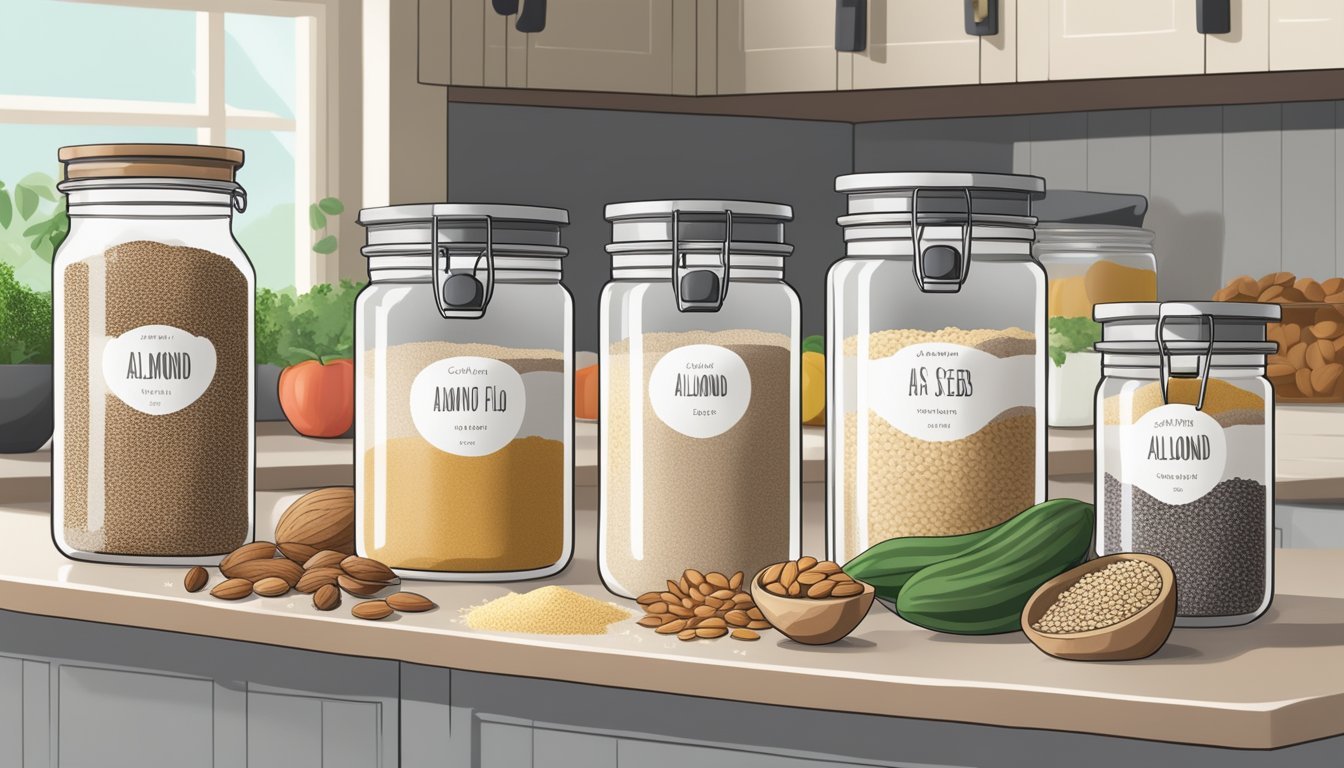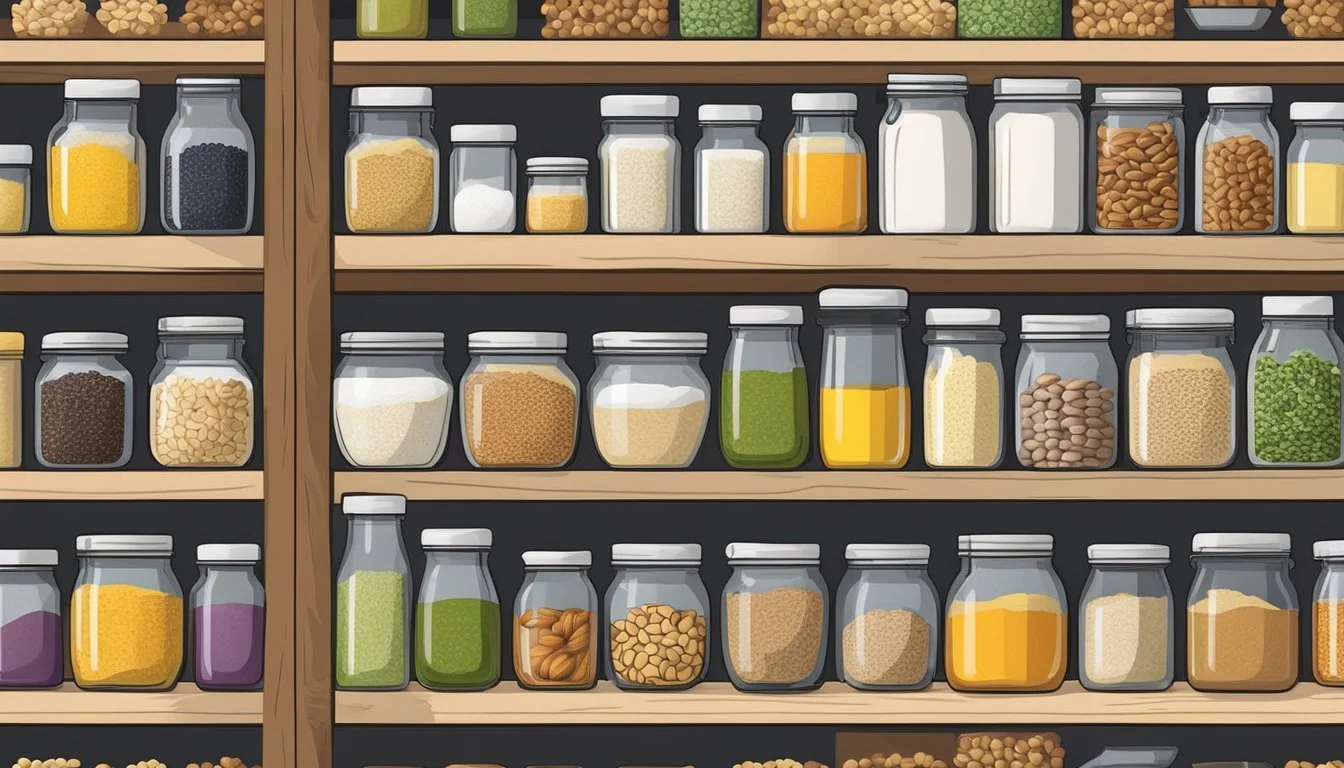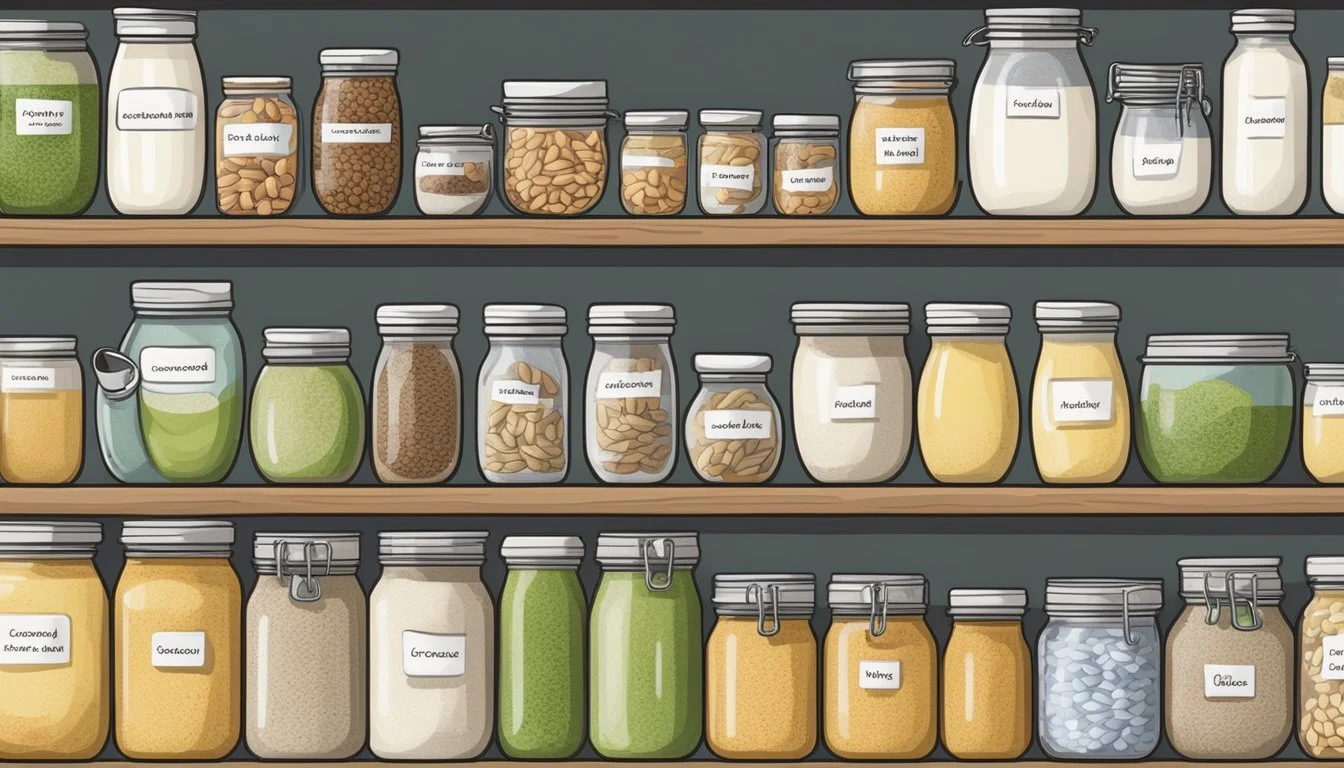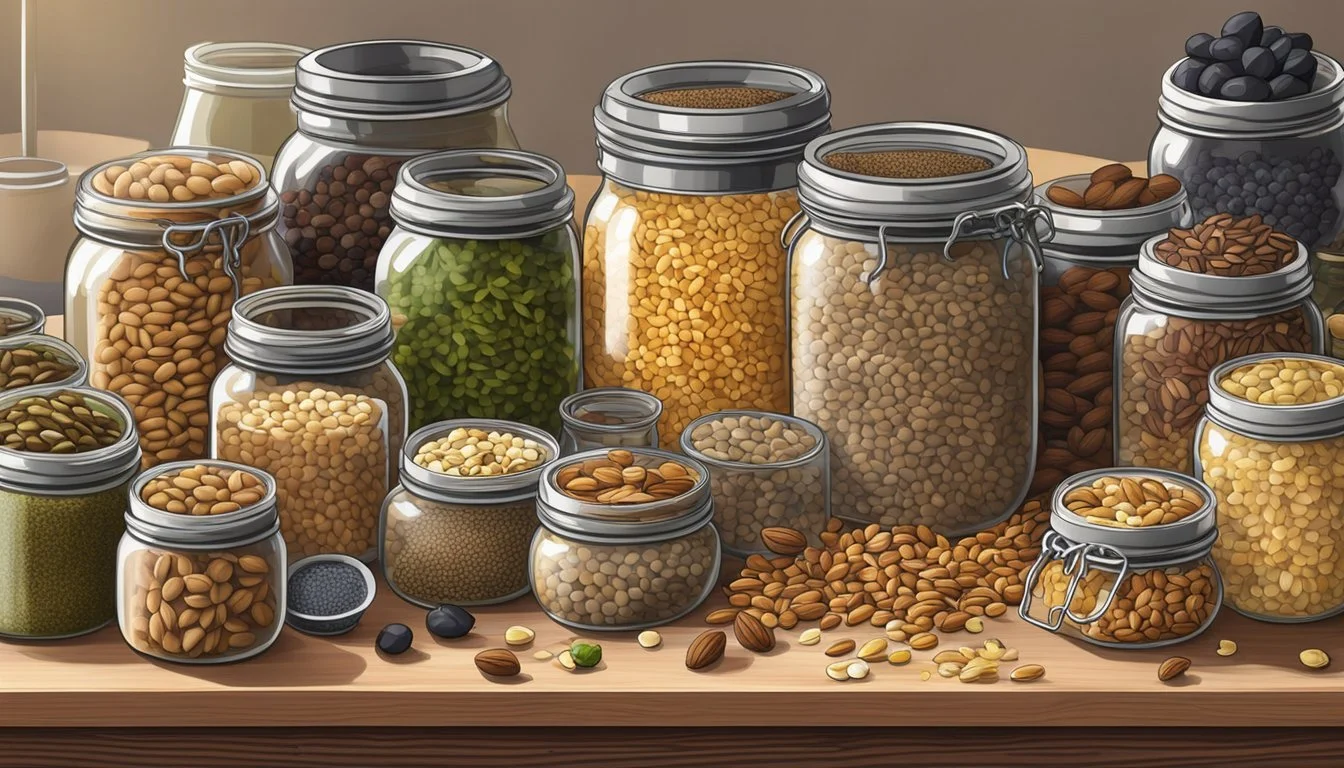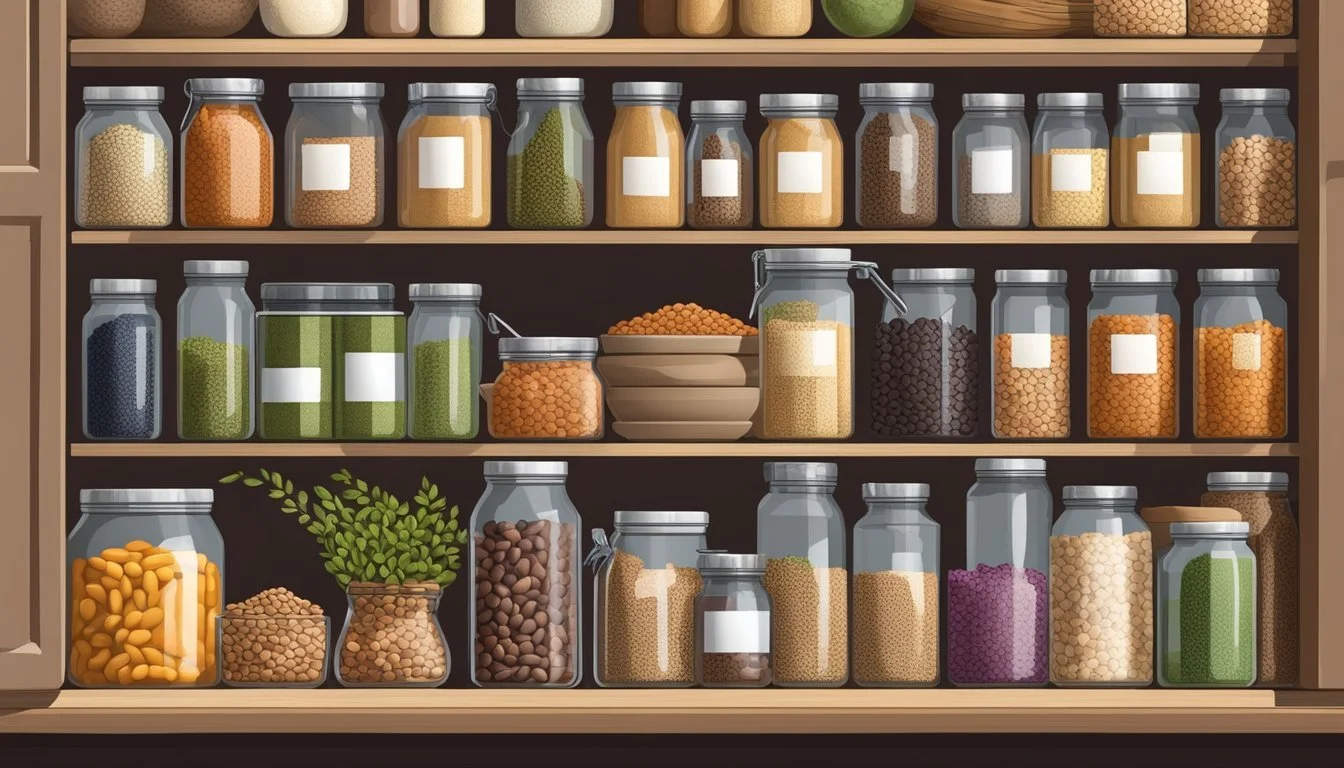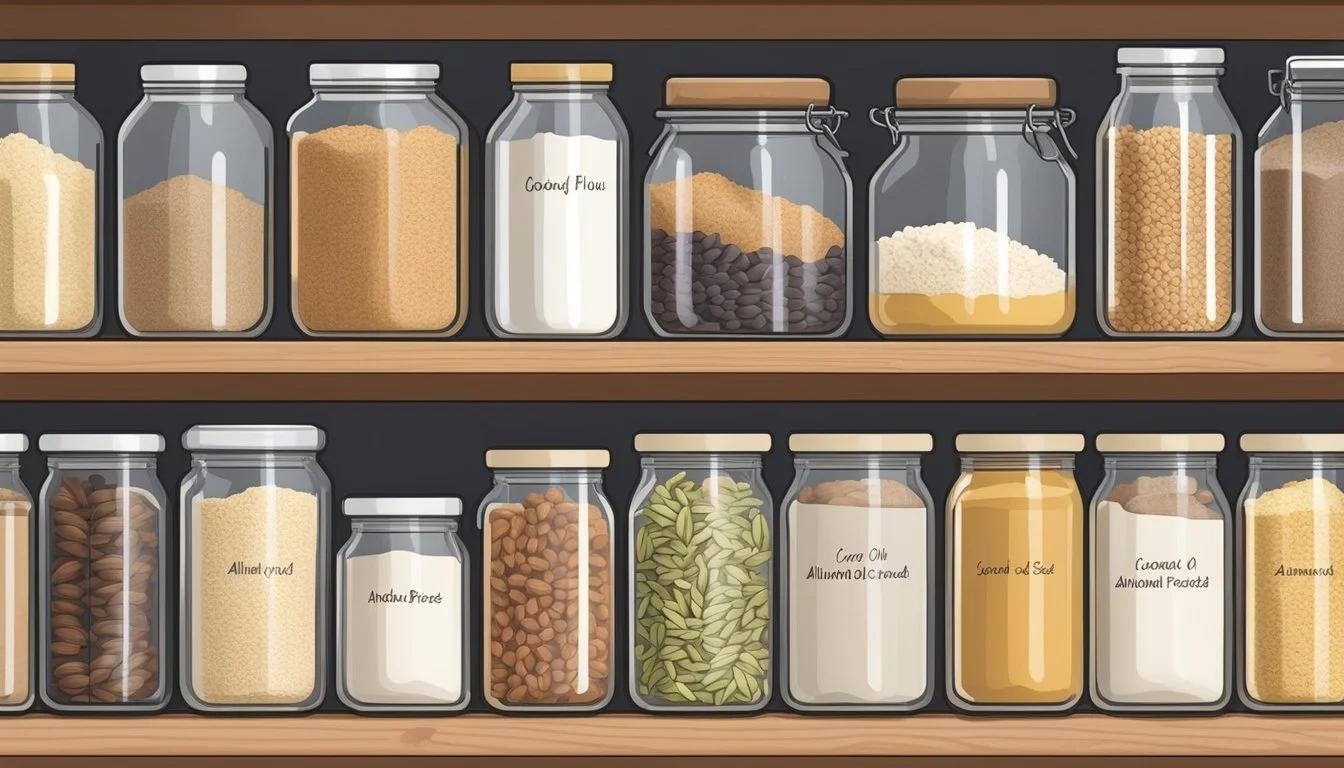How to Create a Grain-Free Kitchen
Stocking up on Essential Pantry Staples for a Healthier Lifestyle
Creating a grain-free kitchen embodies a commitment to a dietary choice that can lead to a variety of health benefits for those who are sensitive to grains or following specific nutritional plans such as paleo or keto lifestyles. Transitioning to a grain-free pantry requires a thoughtful approach to food selection, ensuring that meals remain balanced, diverse, and enjoyable. It all begins with a foundation of pantry staples that replace traditional grain-based items with nutrient-dense alternatives that are just as versatile.
Key to this transformation are nuts (What wine goes well with nuts?) and seeds, which are ideal substitutes for grains because of their high protein content, healthy fats, and fiber. Nut flours like almond and coconut flour offer excellent gluten-free and grain-free baking alternatives, enabling the creation of breads, pastries, and other baked goods that align with a grain-free diet. Additionally, seeds such as chia, flax, and hemp provide textural variety and nutritional boosts that can be easily incorporated into smoothies, yogurts, and salads.
With a carefully curated selection of pantry items, anyone can maintain a delightful and nutritious grain-free kitchen. Essential oils like coconut and extra virgin olive oil, along with aluminum-free baking powder and a variety of vinegars, can enrich flavors and contribute to a diverse range of grain-free culinary preparations. By focusing on these staples, individuals can ensure a seamless and stress-free transition to a grain-free lifestyle.
Creating a grain-free kitchen is an exciting and health-conscious endeavor that can cater to a variety of dietary preferences and wellness goals. By stocking up on an array of grain-free nutrient-dense foods and embracing the grain-free nutritional impact, individuals can craft a kitchen environment that supports their overall well-being.
For individuals focused on grain-free muscle building or seeking to optimize their athletic performance, incorporating sources of lean proteins, healthy fats, and a variety of nutrient-dense foods can provide the essential building blocks for strength and recovery. Additionally, ensuring the availability of grain-free fiber from fruits, vegetables, and seeds can contribute to digestive health and overall well-being.
Individuals experiencing grain-free weight loss plateaus can benefit from a well-stocked grain-free kitchen, offering a fresh approach to support their wellness journey. Additionally, preparing grain-free condiments dressings can add flavor and variety to meals without compromising dietary choices.
By curating a kitchen that prioritizes whole, unprocessed foods and a diverse range of nutrients, individuals can create a supportive and health-conscious environment that aligns with their lifestyle and wellness objectives.
Understanding Grain-Free Eating
Transitioning to a grain-free lifestyle revolves around omitting grains from one's diet, which can lead to various health benefits. This section will explore what qualifies as grain-free and the potential health advantages of following this diet.
Defining Grain-Free
A grain-free diet excludes all types of grains, which are the seeds of grasses. This includes wheat, rice, corn, barley, and oats, among others. Gluten, a protein found in wheat, barley, and rye, is inherently avoided in a grain-free diet, though being grain-free extends beyond just eliminating gluten. Moreover, a grain-free diet typically omits foods derived from grains, like bread, pasta, and cereals. Some individuals may choose to extend this exclusion to "pseudo-grains" like quinoa and amaranth, though technically they are not true grains.
Benefits of a Grain-Free Diet
Individuals may experience benefits from adopting a grain-free diet, especially those with certain health conditions:
Digestive Health: People with gluten sensitivity or celiac disease will find that a grain-free diet can improve gastrointestinal symptoms since it naturally excludes gluten.
Inflammatory Conditions: By eliminating grains, which can be inflammatory for some, there could be an improvement in inflammatory conditions such as arthritis.
Blood Sugar Management: A diet without grains can lead to more stable blood sugar levels, as it typically contains lower amounts of carbohydrates.
It is crucial to ensure that removing grains does not result in nutritional deficiencies. Therefore, one should be mindful to obtain essential nutrients like fiber, B vitamins, and minerals through other food sources. These can include fruits, vegetables, nuts, seeds, eggs, and dairy, if dairy is not also being avoided. Dairy is often permitted in a grain-free diet but some individuals may choose to exclude dairy as well for personal health reasons.
Setting Up Your Grain-Free Kitchen
When embarking on a grain-free lifestyle, setting up one's kitchen with necessary equipment and organizing the space efficiently is crucial for maintaining this dietary practice.
Essential Equipment
Food Processor: A powerful food processor is indispensable for creating grain-free meals. It allows one to easily make alternative flours, nut butters, and purées, which are foundational in grain-free recipes.
Refrigeration: Proper refrigeration is key in a grain-free kitchen. The fridge and freezer become paramount for storing fresh produce, meats, and homemade grain-free items that often lack preservatives.
Fridge: For optimal freshness, designate sections for different food groups to avoid cross-contamination.
Freezer: Use it to extend the shelf-life of meats, fruits, and pre-prepared meals.
Baking Materials:
Baking soda
Aluminum-free baking powder (for leavening purposes)
Mixing bowls (small to large)
Measuring cups and spoons (for precise ingredient measurements)
Silicone mats and parchment paper (for non-stick baking)
Organizing Your Space
Proper organization of the pantry, freezer, and refrigerator ensures ease of access and minimizes food waste.
Pantry:
Use clear, airtight containers for storing nuts, seeds, and flours made from non-grain sources.
Label shelves by category such as 'baking ingredients', 'snacks', and 'oils and vinegars'.
Freezer:
Implement a first-in, first-out rotation system to manage inventory.
Group items together, such as meats with meats and vegetables with vegetables, to find things quickly.
Refrigerator:
Adjust shelves to suit the sizes of food containers commonly in use.
Reserve crisper drawers for fruits and vegetables exclusively.
By equipping a kitchen with essential tools and organizing the space to cater to grain-free ingredients, individuals can ensure a smoother transition and sustainable adherence to a grain-free diet.
Grain-Free Pantry Staples
Creating a grain-free kitchen involves selecting alternatives that replace traditional grain-based ingredients without compromising on taste or versatility. The staples listed below ensure a well-prepared pantry, ready to support a diverse range of grain-free cooking and baking needs.
Flours and Baking Essentials
Grain-free cooking flourishes with a variety of nut and seed flours that offer distinct flavors and baking properties. Key flours include:
Almond Flour: High in protein, good for cakes and cookies.
Coconut Flour: Very absorbent, use less than other flours.
Baking Powder (Aluminum-Free): Essential for rise in baked goods.
Baking Soda: Often paired with an acid to leaven and lighten recipes.
Sweeteners and Flavorings
Natural sweeteners and flavorings enhance taste without added grains, common choices include:
Honey: A natural sweetener suitable for a variety of dishes.
Maple Syrup: Adds sweetness with a distinct maple flavor.
Cacao Powder: Provides chocolatey richness, minus the sugar.
Vanilla Extract: Instills classic flavor to sweeten recipes.
Oils and Fats
Healthy fats are a cornerstone in the grain-free pantry, offering cooking fats and flavor enhancers such as:
Extra Virgin Olive Oil: Ideal for salads and light sautéing.
Coconut Oil: Stable at high temperatures, works for frying.
Ghee: Clarified butter that's lactose-free, great for high-heat cooking.
Nuts and Seeds
Nuts and seeds are nutrient-dense staples that provide essential fats and proteins, items include:
Almonds, Walnuts, Cashews: Versatile nuts for snacking or adding crunch to dishes.
Seeds (Chia, Flaxseed, Hemp): High in omega-3s, for baking or as toppings.
Nut Butters: Almond butter, tahini (sesame seed paste), for spreads or recipe ingredients.
Refrigerator and Freezer Must-Haves
Creating a grain-free kitchen requires thoughtful stocking of the refrigerator and freezer with alternates to dairy, a variety of fresh produce, and a selection of meat and seafood that provide the proteins and nutrients necessary for a balanced diet.
Dairy Alternatives
For individuals avoiding dairy or grains, the refrigerator should contain dairy-free milk alternatives such as almond milk, coconut milk, or cashew milk. These are excellent for smoothies, grain-free cereal, or simply as a beverage. It's important to choose unsweetened varieties to avoid added sugars. Options like coconut milk can also be used in cooking and baking as a cream substitute. Also, one may keep a supply of non-dairy yogurts made from almonds or coconuts.
Fresh Produce
The refrigerator needs to be stocked with a range of fresh produce. Berries (such as strawberries, blueberries, and raspberries) are perfect for a quick snack and are rich in antioxidants. One should also store an assortment of fresh vegetables, which are essential for grain-free diets; these might include leafy greens, avocado, and bell peppers. Here's how one might organize their fresh produce:
Leafy Greens: Store spinach, kale, and Romaine for salads and cooking.
Cruciferous Vegetables: Broccoli and cauliflower (how long does cauliflower last?) can be stored for multiple uses.
Berries: Keep a small section of the refrigerator for strawberries and blueberries.
Other Fruit: Store slices of melon, peaches, or apples for a sweet treat.
Meat and Seafood
For proteins, a variety of meat and seafood is essential. One can store portions of chicken, which can last for several months in the freezer, and is versatile for many recipes. Grass-fed beef and wild-caught fish like salmon are rich in omega-3 fatty acids and are also recommended staple items. For convenience, one might include cans of tuna in water, which can be a quick protein addition to salads and are shelf-stable for storage in the pantry. A summary of protein sources includes:
Chicken: A lean protein that is a staple for meal prep.
Beef: Grass-fed beef can be used for steaks, stews, and ground meat dishes.
Fish: Options like salmon, trout, and other fatty fish are rich in essential nutrients.
Eggs: Store eggs as a versatile protein source for breakfast dishes or baking.
One should also consider incorporating nuts and seeds as they are compact sources of energy and nutrients that store well in the fridge, helping to extend their freshness.
Herbs, Spices, and Condiments
A well-stocked grain-free kitchen relies on the creative use of herbs, spices, and condiments to add flavor and variety to meals. It's important to choose seasonings that align with a grain-free diet yet still provide ample taste and versatility.
Seasoning Staples
The foundation of any flavorful kitchen begins with a variety of spices and herbs. Stocking up on these essentials is crucial:
Salt: Opt for both iodized table salt for its dietary iodine and sea salt for its minerals and coarser texture.
Herbs: Dried oregano, rosemary, thyme, and basil should be readily available for their complementary flavors.
Spices: Include a diversity, such as cumin for its earthy depth, cinnamon for sweetness without sugar, garlic powder for convenience, and paprika for a gentle heat. They offer versatility for various cuisines without adding grain-based ingredients.
Homemade and Store-bought Condiments
Condiments can be both a friend and foe in a grain-free kitchen, depending on their ingredients. When choosing condiments, look for options without added sugars or fillers:
Vinegars: A good selection includes apple cider vinegar, cider vinegar, and balsamic vinegar. These provide a tangy kick to dishes and can serve as a base for homemade dressings without the grain-based thickeners found in many commercial brands.
Sauces: Coconut aminos serve as a soy sauce alternative, adding a rich, umami flavor to dishes without the grains usually found in soy sauce.
Dressings: One should always read labels or opt to make dressings at home. Simple vinaigrettes can be crafted from the vinegars mentioned, mixed with herbs and a healthy fat like olive oil.
By focusing on these grain-free staples, anyone can easily season and enhance their dishes while maintaining a diet free from grains.
Seeds and Nuts: Snacking and Cooking
In a grain-free kitchen, seeds and nuts become fundamental both for snacking and culinary creations due to their versatility and nutrient density.
Nutrient-Rich Snacks
Seeds and nuts are a powerhouse for snack times, offering essential fats, proteins, and fiber. Almonds and walnuts are excellent for a heart-healthy munch, boasting omega-3 fatty acids and Vitamin E. Cashews provide a creamy texture perfect for homemade nut butter or a satisfying crunch when roasted. For those seeking a boost of fiber and omega-3s, flax seeds can be sprinkled over yogurt or blended into smoothies. They should store these snacks in airtight containers to maintain freshness.
Healthy Snack Examples:
Walnuts with a touch of sea salt
Homemade cashew butter
Flax seed topping on oatmeal or salads
Cooking with Nuts and Seeds
When one introduces nuts and seeds into cooking, they enrich dishes with texture and flavor. Ground flax seeds can serve as a grain-free breadcrumb alternative or a binding agent in recipes. Chopped nuts like almonds, walnuts, or cashews add a delightful crunch to salads and baked goods. One can also blend these nuts into a smooth paste to thicken sauces or to create dairy-free milk alternatives. It is essential to toast them lightly to enhance their nutty flavor before incorporating them into recipes.
Culinary Uses:
Flax seed meal as a thickener for soups
Finely chopped nuts for topping on grain-free bread
Cashew cream as a dairy substitute in sauces
By infusing nuts and seeds into their snacking habits and cooking regimen, individuals can enrich their grain-free kitchen with delicious, nutrient-packed choices.
Legumes and Other Protein Sources
Legumes serve as a core source of protein in a grain-free kitchen. They can be utilized in a variety of dishes such as soups and stews, offering a substantial nutrient profile that includes essential amino acids and fiber.
Bean Alternatives
For those who prefer or need alternatives to traditional beans, there are other legumes like lentils and chickpeas. Both can be used in soups or as a base for hearty broths. Here's a quick guide to these alternatives:
Lentils: These small legumes cook quickly and can be added to soups or served as a side dish. They come in several varieties, such as green, red, and brown.
Chickpeas: Also known as garbanzo beans, chickpeas are versatile and can be used in dishes ranging from salads to stews. They are especially popular in grain-free recipes like hummus.
Protein-Packed Staples
In addition to legumes, a grain-free pantry should include a selection of nuts and seeds for added protein. Options like almonds, walnuts, and sunflower seeds can be enjoyed as snacks or used to enhance meals. They provide a nutrient-dense boost to any dish.
Nuts: Often incorporated into recipes or eaten on their own, nuts are a convenient protein source. Almonds and walnuts are common choices for their favorable nutrient content.
Seeds: Flax seeds, chia seeds, and hemp seeds are known for their high omega-3 content and can be sprinkled over salads or blended into smoothies.
Incorporating a variety of protein sources like beans, chickpeas, nuts, and seeds into one's diet not only provides essential nutrients but also aids in creating satisfying and diverse meals that are conducive to a grain-free lifestyle.
Specialty Items and Occasional Treats
While the mainstay of a grain-free kitchen includes staples like fresh vegetables, proteins, and healthy fats, it's also important to stock a selection of specialty items for occasional treats. These indulgences range from sweet desserts to savory snacks, (What wine goes well with savory snacks?) ensuring there's something for every palate when the craving strikes.
Sweet Treats and Desserts
When it comes to sweetening desserts without grains, many turn to alternative sugars and sweeteners. Coconut sugar is a popular choice, providing a lower glycemic index compared to refined sugars. Dates offer a natural and nutrient-dense sweetness, ideal for blending into pastes for use in recipes. For those who adhere to a vegan lifestyle, dark chocolate that is dairy-free can satisfy chocolate cravings. Here's a succinct list of sweet treat staples:
Sugars: Coconut sugar, Raw honey
Sweeteners: Stevia, Monk fruit extract
Chocolate: Dairy-free dark chocolate chips or bars
Fruit: Medjool dates, Dried fruits (without added sugars)
Savory Indulgences
A grain-free kitchen doesn't neglect savory snacks and appetizers. Items like hummus made from chickpeas or other beans are a versatile dip, perfect for pairing with vegetable sticks. Quinoa, while often thought of as a grain, is actually a seed and serves as a protein-rich base for savory dishes. For dairy-free options, nutritional yeast can provide a cheesy flavor without actual dairy. Below are some savory indulgences one might keep on hand:
Dips: Homemade or store-bought hummus, Avocado-based guacamole
Seeds: Quinoa (for salads and as a rice substitute)
Dairy Alternatives: Nutritional yeast, Vegan cheese products
Creating Balanced Meals
To create grain-free balanced meals, one must focus on nutrient-dense pantry staples that substitute traditional grain sources. Knowing how to plan meals and adapt recipes is essential.
Grain-Free Meal Planning
When planning grain-free meals, it's crucial to include a variety of pantry staples that provide the necessary macronutrients. Incorporating a range of proteins, such as meat or plant-based alternatives, ensures sufficient protein intake. Fats can be obtained from nuts and seeds, while fruit and specifically berries offer natural sweetness and vital micronutrients without grains. Applesauce can serve as a base for sauces or as a dessert ingredient. Where permissible, including dairy products like yogurt and cheese introduces probiotics and calcium.
A sample grain-free meal plan may look like:
Breakfast: Scrambled eggs with avocado and berries
Lunch: Mixed green salad with grilled chicken and nuts, dressed in olive oil
Snack: Carrot sticks with almond butter dip
Dinner: Beef stir-fry with assorted vegetables served over cauliflower rice
Recipe Adaptation and Substitutions
Adapting recipes to fit a grain-free kitchen involves finding suitable substitutions for common grain-based ingredients. For baking or breading, almond flour or coconut flour can replace wheat flour. Soy or almond milk can be used in place of dairy. Thicken sauces with arrowroot powder instead of cornstarch. For added texture, cooked cauliflower or broccoli rice can substitute grains like rice or couscous (What wine goes well with couscous?).
Here are common substitutions:
Wheat Flour -> Almond Flour, Coconut Flour
Pasta -> Spiralized Vegetables, Eggplant Lasagna Sheets
Rice -> Cauliflower Rice, Broccoli Rice
Dairy Milk -> Coconut Milk, Almond Milk
It is essential to measure these alternatives appropriately, as they have different absorbency and consistency properties than traditional grain-based ingredients.
Shopping and Budget Tips
Creating a grain-free kitchen demands strategic shopping to maintain variety and ensure budget-friendliness. Focusing on buying in bulk and leveraging seasonal produce can lead to significant savings.
Buying in Bulk
Consumers can save money by purchasing staple pantry items in larger quantities. Items such as nuts, seeds, and legumes are excellent for a grain-free pantry and often have a long shelf life. Canned goods like olives and tomatoes can also be bought in bulk, ensuring one always has a ready supply for grain-free recipes. It's important to check the expiry dates and have adequate storage space when buying in bulk.
Seasonal Shopping
Shopping for seasonal produce can be more budget-friendly and offers the freshest options. In the fall, one can stock up on apples and cranberries for their pantry. These can be dried or preserved to extend their shelf life. Similarly, buying dates in season can lead to better quality and prices, and they serve as a natural sweetener in various grain-free dishes. Always look for local markets or farmer's markets for the best deals on seasonal items.
Maintaining a Grain-Free Kitchen
Creating a grain-free kitchen requires diligence in both the selection of ingredients and the daily operation of the kitchen to ensure the integrity of a grain-free diet is preserved.
Consistent Ingredient Rotation
To maintain a grain-free kitchen, one must consistently monitor and replace pantry staples. It's essential to stock up regularly on key ingredients such as nuts and seeds, which are fundamental in a grain-free pantry. These items not only offer essential fats and proteins but also serve as the base for many grain-free recipes. Ensuring a fresh supply can prevent reliance on grains as a fallback, which can disrupt a grain-free lifestyle. Moreover, a well-organized pantry that prioritizes grain-free items encourages their use and reduces the temptation to reintroduce grains.
Avoiding Cross-Contamination
Cross-contamination is a serious concern for those adhering to a strict grain-free or gluten-free diet. Even trace amounts of grains can affect the health of individuals with sensitivities. To prevent contamination:
Use separate storage containers and cooking utensils solely for grain-free ingredients and meals.
Label containers as "Grain-Free" to avoid mix-ups.
Thoroughly clean surfaces and kitchen tools before preparing grain-free meals, and if possible, designate specific areas of the kitchen for grain-free food preparation.
Conclusion
Creating a grain-free kitchen requires careful selection of pantry staples to ensure a variety of nutritious and flavorful meals. Essential items like baking soda, aluminum-free baking powder, and a range of vinegars provide foundational elements for many recipes.
In a grain-free pantry, alternatives to traditional flour such as almond flour and coconut flour are indispensable for cooking and baking. Oils like coconut oil and extra virgin olive oil are key for sautéing and dressing salads. Natural sweeteners such as raw honey and coconut sugar are preferred choices over refined sugars.
Category Items Flours Almond flour, coconut flour Sweeteners Raw honey, coconut sugar Oils Coconut oil, extra virgin olive oil Leavening agents Baking soda, aluminum-free baking powder
To maintain a well-stocked grain-free kitchen, one may also include coconut aminos for seasoning, akin to soy sauce but without the grains. Flavorful additions such as herbal teas can also be included, catering to personal preference.
When managing a grain-free kitchen, it's essential to be familiar with the various substitutes available, and how they can replace conventional grains without sacrificing taste or texture. With these staples on hand, meal prepping and daily cooking become less daunting and can open a new realm of grain-free culinary possibilities.

